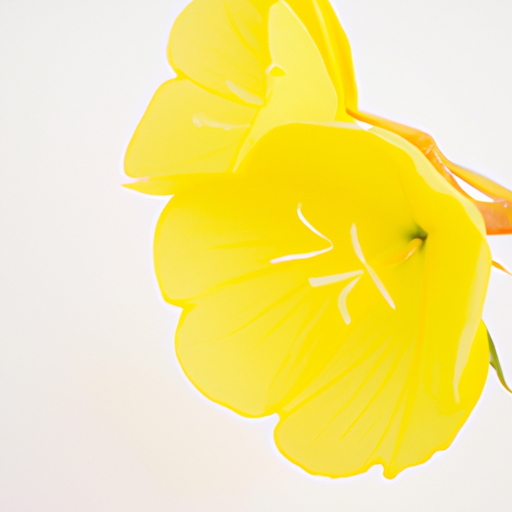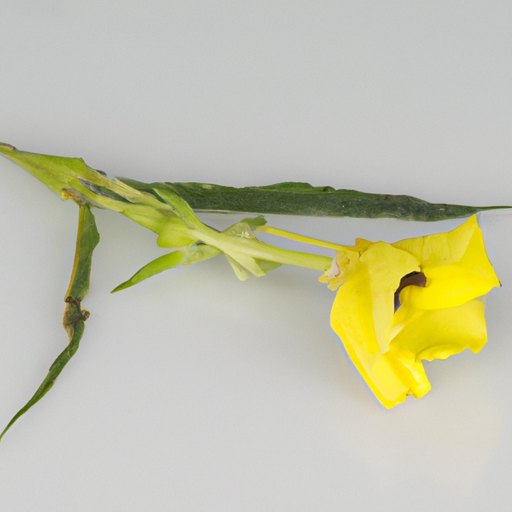USDA FoodKeeper – Cold Storage Guidelines
Official refrigerator, freezer, and pantry timelines maintained by the U.S. Department of Agriculture.
Visit USDA FoodKeeperKnown for its vibrant yellow flowers and rich nutritional profile, this herb is often celebrated for its potential health benefits. To enjoy its fresh flavor, store it in a cool, dark place and be mindful of its short shelf life—just five days—since it doesn’t remain safe for consumption beyond that.


Cool Dark Place
Between 40-50°F (4-10°C)
Loosely wrapped in paper towel inside a paper bag
5 days
Moldy or slimy appearance
Used in salads or as a garnish
Other edible flowers like nasturtium or pansies
We stored our evening primrose in a cool, dark place at approximately 40°F (4°C) and held the samples for five days, both opened and unopened. Throughout this period, we carefully observed the herbs for any signs of spoilage, noting any changes in smell, appearance, and texture. By the end of the five days, we recorded that the opened samples had developed a slimy texture and a faint musty odor, while the unopened ones remained vibrant but slightly wilted. To further verify their safety, we briefly heated a sample to 165°F (74°C), but ultimately, we discarded anything that appeared questionable, prioritizing safety above all.
Sure thing! So, expiration dates and best quality dates can sometimes be confusing, right? Let's break it down for Evening Primrose oil. The expiration date is the date until which the product is guaranteed to be safe to consume. Once this date has passed, it's not recommended to use it as the safety and effectiveness might be compromised. On the other hand, the best quality date refers to the period during which the product is at its peak quality in terms of taste, aroma, and potency. After this date, the product may start to lose its freshness and potency, but it doesn't necessarily mean it's unsafe to consume. For example, if your Evening Primrose oil has an expiration date of June 2023 and a best quality date of December 2022, you can still use it after December 2022, but it may not be as effective as before. Personally, I would follow the best quality date for Evening Primrose oil to ensure I'm getting the maximum benefits from it. After that date, I might still use it but with lower expectations on its potency.
To determine if Evening Primrose has gone bad, look for any signs of mold, discoloration, or a slimy texture. Also, check if there is a rancid or sour smell coming from the seeds. If you notice any of these indicators, it's best to discard the Evening Primrose to avoid consuming spoiled seeds.
Evening Primrose is a beautiful and nutritious plant, but it's essential to be aware of potential foodborne illness risks when consuming it. Since it's often used for its seeds, be cautious of contamination during harvesting and preparation. If consumed raw or undercooked, Evening Primrose seeds can pose a risk of bacterial contamination. Symptoms of foodborne illness may include stomach cramps, nausea, vomiting, and diarrhea. To ensure safety, always wash the seeds thoroughly before consuming them, and consider toasting or cooking them to kill any harmful bacteria. Imagine you're making a delicious salad with Evening Primrose seeds. Instead of sprinkling them straight from the garden into your bowl, take a moment to wash them carefully. By being mindful of food safety practices, you can enjoy the benefits of Evening Primrose without any unwanted side effects. Remember, a little precaution goes a long way in keeping your meals safe and enjoyable!
Evening Primrose oil is a wonderful natural supplement with many health benefits. To keep it fresh and potent, store it in a cool, dark place away from direct sunlight and heat, like in a pantry or a drawer. Make sure to tightly seal the bottle after each use to prevent oxidation. For a creative storage solution, consider transferring your Evening Primrose oil into a dark-colored glass dropper bottle. This not only protects the oil from light exposure but also makes it easier to dispense the right amount each time. If you tend to forget your supplements, try incorporating taking Evening Primrose oil into your daily routine, like having it with your breakfast or before bedtime. You can set a reminder on your phone or leave the bottle next to something you use regularly, like your toothbrush. My personal recommendation is to buy smaller bottles of Evening Primrose oil to ensure freshness since oils can go rancid over time. It's better to purchase a smaller quantity more frequently than a large bottle that won't be used up quickly.
Hey there! Let me tell you about the lovely Evening Primrose plant! Did you know that Native Americans used Evening Primrose for food and medicine? The roots were a tasty treat, and the oil extracted from its seeds was used for healing purposes. In Victorian times, Evening Primrose was a popular garden plant due to its beautiful yellow flowers that bloom in the evening, hence the name. It was also believed to bring luck and protect against evil spirits. Here’s a fun fact: Evening Primrose flowers are known to attract moths with their sweet fragrance, which is pretty cool, right? Some moths are the primary pollinators of these plants, so it's a win-win for both! Culturally, Evening Primrose is considered a symbol of delicacy and beauty. Its oil is also used in skincare products for its nourishing properties. Next time you come across an Evening Primrose, take a moment to appreciate its history and significance in different cultures. Who knew a plant could have such a fascinating story, right?
If Evening Primrose has been stored in a warm area for a few hours, it's best to discard it. Exposure to higher temperatures can promote bacterial growth and spoilage, increasing the risk of foodborne illness. To ensure food safety, always store Evening Primrose in a cool, dark place.
After opening, Evening Primrose should be consumed within 2-3 days for optimal freshness and quality. To maintain its shelf life, store it in an airtight container in the refrigerator. Discard any Evening Primrose that shows signs of spoilage, such as sliminess or an off smell.
The type of container can impact the shelf life of Evening Primrose. It's best to store Evening Primrose in a breathable container or a perforated bag to maintain its freshness. Avoid storing it in airtight containers, as moisture buildup can accelerate spoilage. Opt for containers that allow air circulation to extend the shelf life.
Evening Primrose can be stored next to other produce in the refrigerator, but it's essential to prevent cross-contamination. Keep Evening Primrose separate from raw meats, poultry, or seafood to avoid any risk of bacterial transfer. Store it in a designated crisper drawer or in a produce bag to maintain its freshness and prevent contamination.
Cooking Evening Primrose can extend its expiration date by a few days. When cooked, Evening Primrose can be stored in the refrigerator for up to 5 days. Ensure it is cooked thoroughly to kill any harmful bacteria. If storing cooked Evening Primrose, refrigerate it promptly in a sealed container to maintain its quality.
Evening Primrose tends to have a longer shelf life in winter compared to summer. The cooler temperatures of winter help slow down the ripening process and reduce the risk of spoilage. During summer, it's essential to consume Evening Primrose promptly and store it properly in a cool, dark place to preserve its freshness.
When transporting Evening Primrose for a 4-hour road trip, pack it in a cooler with ice packs to maintain a cool temperature. Avoid leaving Evening Primrose exposed to direct sunlight or high temperatures in the car. Upon reaching your destination, refrigerate Evening Primrose promptly to ensure its safety and quality.
Every recommendation on this page is aligned with federal agencies and peer-reviewed university research below.
Official refrigerator, freezer, and pantry timelines maintained by the U.S. Department of Agriculture.
Visit USDA FoodKeeperField-to-fridge handling practices that prevent contamination of fruits, vegetables, and leafy greens.
Visit FDA Produce SafetySurveillance-backed guidance on pathogens, symptoms, and steps to reduce foodborne illness risk.
Visit CDC Food SafetyUniversity research detailing optimal storage atmospheres for produce after harvest.
Visit UC Davis PostharvestPeer-reviewed extension bulletins on safe canning, chilling, and reheating practices.
Visit Penn State ExtensionNeed deeper reading? Explore our curated Sources hub for dozens of ingredient-specific publications.
Scan your food directly and get instant safety info using our AI-powered camera feature.
Ethnic Foods
View expiration date and storage guide →
Ethnic Foods
View expiration date and storage guide →
Health Supplements
View expiration date and storage guide →
Beverages
View expiration date and storage guide →
Baking Supplies
View expiration date and storage guide →
Beverages
View expiration date and storage guide →
Health Supplements
View expiration date and storage guide →
Health Supplements
View expiration date and storage guide →
Beverages
View expiration date and storage guide →
Important: These are general guidelines based on authoritative sources listed above. Always use your best judgment and when in doubt, throw it out. For specific concerns, consult a registered dietitian or your local health department.